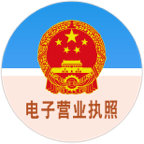关税风暴再起,东盟首当其冲?
2025年7月,美国前总统特朗普再次掀起全球贸易风暴。他向包括越南、马来西亚、泰国在内的多个东南亚国家发出关税威胁信函,拟对其出口至美国的电子产品、机械设备和农产品征收高达49%的惩罚性关税。尽管信函中提及“暂缓执行”,但措辞强硬,释放出明确信号:美国将重新审视与亚洲国家的贸易关系,尤其是那些被视为“中国产业转移受益者”的国家。
这场关税风暴的直接目标是东盟国家,但其间接受冲击的,却可能是大量在东南亚设有工厂、仓储和贸易平台的中国企业,尤其是电子元器件与制造业领域的中坚力量。
中企在东盟遭遇挑战?
近年来,随着中美贸易摩擦持续升温,越来越多中国企业选择“走出去”,将部分产能、组装环节甚至出口通道转移至东南亚,以规避美国对华关税。这一趋势在电子产业链中尤为明显。大量中国制造的元器件通过越南、马来西亚等国的工厂组装后出口至美国,原产地标签变更为“Made in Vietnam”或“Made in Malaysia”,有效绕开对华关税。华为、比亚迪电子、立讯精密等企业在越南、泰国设立制造基地,既服务本地市场,也作为对美出口的“跳板”。中国企业为东南亚本地EMS厂商提供元器件、模组、测试设备,形成“中上游在中国、下游在东盟”的协同格局。
这种深度融合的利益链条,使得特朗普对东盟的关税新政不仅是对当地国家的打击,更是对中国企业“出海战略”的一次正面冲击。一旦美国对东盟出口产品加征高额关税,中国企业通过东南亚“中转出口”的路径将被封堵。原本依赖“东盟标签”规避关税的策略将失效,企业要么承担更高的税负,要么被迫将出口路径转回中国本土,重新面对美国的直接关税壁垒。
客户直连:可能的突围路径
在东南亚设厂的中国企业可能面临“身份审查”或“原产地追溯”压力。美国可能要求更严格的供应链透明度,甚至对“中资背景”企业设限。这将影响中国企业在当地的扩产计划、融资能力与客户信任。与此同时,美国品牌客户可能因担心关税风险,转向印度、墨西哥等“政策中立区”寻找替代供应商。这对依赖东南亚制造基地承接美单的中国企业构成直接威胁。
面对这一局面,中国电子元器件企业必须重新审视自身的全球布局与客户结构。其中,“客户直连”战略正成为越来越多企业的优先选项。客户直连(Direct-to-OEM)指的是企业绕过中间贸易商或代工厂,直接与终端品牌客户建立供货关系。这种模式不仅能提升利润率,更能增强客户粘性、提升品牌影响力,并在地缘政治风险中获得更强的抗压能力。
客户直连的优势在于绕开中转风险,构建合规供应链。直接对接美国客户,可通过原产地管理、税务合规等方式争取关税豁免或特殊待遇,减少对东南亚中转平台的依赖,降低政策不确定性。同时,省去中间环节,企业可获得更高毛利;与客户共同参与产品设计、验证,形成“绑定式合作”。从“代工厂”转型为“全球供应商”,也有助于拓展非美市场,如欧洲、日本、中东等。
实践中,其实已有成功样本。立讯精密从连接器供应商成长为苹果核心组装商,直接参与产品设计与交付,成功摆脱“代工依赖”。顺络电子为特斯拉、博世等客户提供定制化电感产品,建立长期直供关系,出口占比持续提升。比亚迪电子通过客户直连模式承接华为、小米、荣耀等品牌整机制造,逐步拓展至北美汽车电子市场。
不过,客户直连并非易事。首先是技术门槛高。企业需具备定制化研发能力、严格的质量控制体系和快速响应机制。其次是合规挑战大。国际品牌客户对供应商的环保、社会责任、数据安全等要求极高,企业需通过RoHS、REACH、ISO、RBA等多项认证。再者是服务体系要求高。客户直连意味着企业要提供本地化技术支持、售后服务和数字化协同平台,这对中小企业而言是巨大挑战。
此外,品牌信任的建立非一日之功。客户直连要求企业具备稳定的交付记录、良好的客户口碑和透明的治理结构。在全球供应链重构与贸易壁垒上升的背景下,客户直连不仅是中国电子企业提升利润的手段,更是其全球化战略的核心支点。它能帮助企业摆脱“低端代工”的标签,迈向“高端制造+全球服务”的新阶段。
特朗普的关税新政再次提醒中国企业:全球化不是简单的“走出去”,而是要构建可持续、可控、可合规的全球供应链体系。对于电子元器件企业而言,客户直连不仅是应对贸易壁垒的战术选择,更是迈向高端制造与全球品牌的战略路径。在不确定性成为常态的时代,谁能掌握客户,谁就掌握了未来。
Former U.S. President Donald Trump has reignited global trade tensions with a new round of tariff threats, this time aimed squarely at Southeast Asia. In a letter sent in early July, Trump proposed punitive tariffs of up to 49% on electronics, machinery, and agricultural goods exported from countries including Vietnam, Malaysia, and Thailand. While the letter included a clause for “temporary suspension,” the tone was unmistakably aggressive, signaling a broader reassessment of U.S. trade relations with Asia—particularly with nations seen as beneficiaries of China’s industrial outflows.
Although the immediate targets are ASEAN economies, the collateral damage could be significant for Chinese electronics manufacturers that have shifted production to Southeast Asia in recent years. These firms—ranging from component suppliers to full-scale EMS providers—have established extensive operations in the region to circumvent existing U.S. tariffs on Chinese-made goods.
China’s Offshore Strategy Under Pressure?
Amid escalating U.S.-China trade frictions, many Chinese companies have adopted a “go-out” strategy, relocating assembly lines and export channels to Southeast Asia. This is especially prevalent in the electronics sector, where components made in China are assembled in Vietnam or Malaysia and then shipped to the U.S. under local origin labels such as “Made in Vietnam.” Major players like Huawei, BYD Electronics, and Luxshare Precision have built manufacturing hubs in Vietnam and Thailand, serving both local demand and acting as springboards for U.S.-bound exports.
This deeply integrated supply chain—where upstream production remains in China and downstream assembly shifts to ASEAN—now faces a direct challenge. If the U.S. imposes high tariffs on ASEAN exports, the workaround of “transshipment” through Southeast Asia could be rendered ineffective. Chinese firms may be forced to either absorb higher costs or reroute exports through China, once again confronting direct tariff barriers.
Direct-to-OEM: A Strategic Pivot?
Chinese firms operating in Southeast Asia may also face increased scrutiny over ownership and origin. Washington could demand greater supply chain transparency or impose restrictions on companies with Chinese capital. This would complicate expansion plans, financing, and customer relationships. U.S. brands, wary of tariff exposure, may shift sourcing to “neutral” countries like India or Mexico, posing a direct threat to Chinese firms relying on ASEAN-based manufacturing.
In response, a growing number of Chinese electronics companies are pivoting toward a “Direct-to-OEM” strategy—bypassing intermediaries and engaging directly with global brand customers. This model not only improves margins but also strengthens customer loyalty and enhances brand visibility, offering greater resilience amid geopolitical uncertainty.
By establishing direct relationships with U.S. clients, firms can build compliant supply chains, potentially qualify for tariff exemptions, and reduce reliance on ASEAN transshipment. The model also enables higher profitability through value-added services like co-design and joint validation, while facilitating expansion into non-U.S. markets such as Europe, Japan, and the Middle East.
Case Studies in Transformation?
Several Chinese firms have already made significant strides in this direction. Luxshare Precision has evolved from a connector supplier into a core assembler for Apple, participating in product design and delivery. Sunlord Electronics supplies customized inductors to Tesla and Bosch, maintaining long-term direct relationships. BYD Electronics, meanwhile, has leveraged its direct-to-OEM model to manufacture devices for Huawei, Xiaomi, and Honor, and is now expanding into North America’s automotive electronics sector.
Challenges Remain?
However, the direct-to-OEM path is not without hurdles. It demands strong R&D capabilities, rigorous quality control, and rapid response systems. Compliance is another major barrier, as global brands impose strict standards on environmental, social, and data security practices. Certifications such as RoHS, REACH, ISO, and RBA are often prerequisites. Moreover, firms must invest in localized support, after-sales service, and digital collaboration platforms—daunting tasks for smaller players.
Building brand trust also takes time. Direct engagement requires a proven track record, transparent governance, and consistent delivery performance. Yet in a world of rising trade barriers and fragmented supply chains, owning the customer relationship may be the most strategic asset a Chinese electronics firm can cultivate.
Trump’s latest tariff salvo is a stark reminder: globalization is no longer about simply “going abroad.” It’s about building sustainable, controllable, and compliant global supply networks. For China’s electronics sector, direct-to-OEM is not just a tactical response—it’s a strategic imperative.
 芯耀
芯耀




 1028
1028








